Explore, adventure, and boss battle your way through the fantasy world of Atios through a robust but accessible campaign.
Kinfire 101
Kinfire Chronicles: Night’s Fall is a campaign game set in the fictional world of Atios. This fantasy world is unique to the game, though both the subtitle and the use of the plural ‘chronicles’ leads me to believe that future games set in this universe may yet be on the horizon. Kinfire Chronicles accommodates 1-4 players. (I will note that all of my plays were solo.) The basic storyline is that you are Seekers, heroes recruited to go on various quests, wielding a special lantern filled with a magical substance known as ‘kinfire.’ Throughout the game you’ll be exploring towns and countryside, adventuring through various encounters, and fighting baddies in “boss battler” style, divided into distinct scenarios which each take a manageable 45-60 minutes.
The ongoing narrative in Kinfire Chronicles is handled primarily through various decks of cards, specific to the scenario. While the adventure and exploration provides a rich backstory and narrative, the primary focus of a scenario is the boss battle. Players will play cards on their turn from their own personal deck to deal either melee or ranged damage, as well as potentially helping other players on their turn by playing a ‘boost’ card that matches the color of the card played.
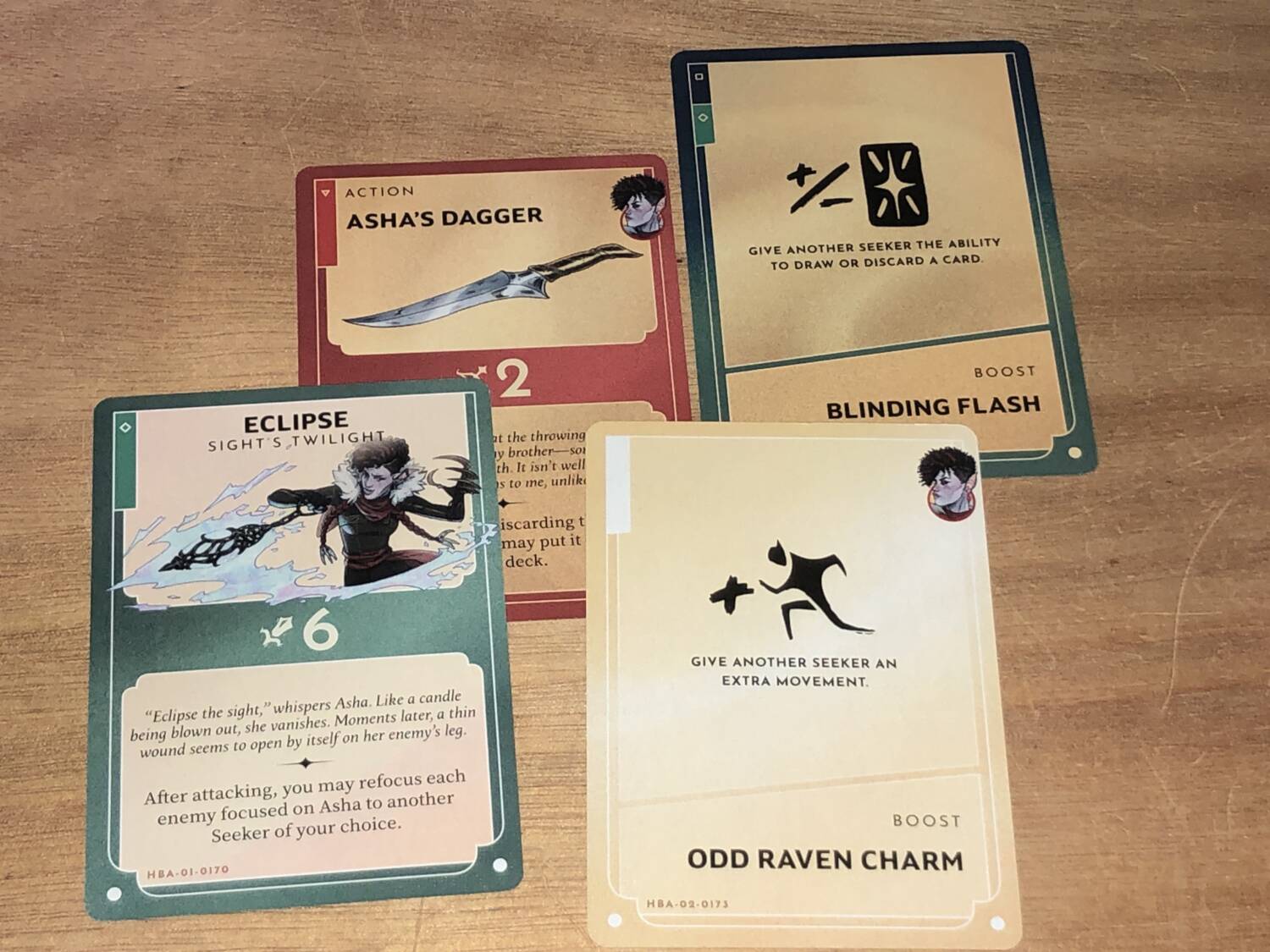
At any point if you have no action (non-boost) cards, you’ll discard everything and draw a new hand. Additionally, each player has a special “lantern card” that starts face-down (on the ‘charging’ side) but gets flipped over when they draw a new hand and becomes available to use. These are generally much more powerful attacks that when played smartly can turn the tide of battle.
Each player has their own personal dashboard which serves as both a health tracker and a handy player aid. The dials do require assembly prior to the start of the campaign, but once assembled fit easily into the individual player box along with the individual decks of cards, the standees, and player chips.
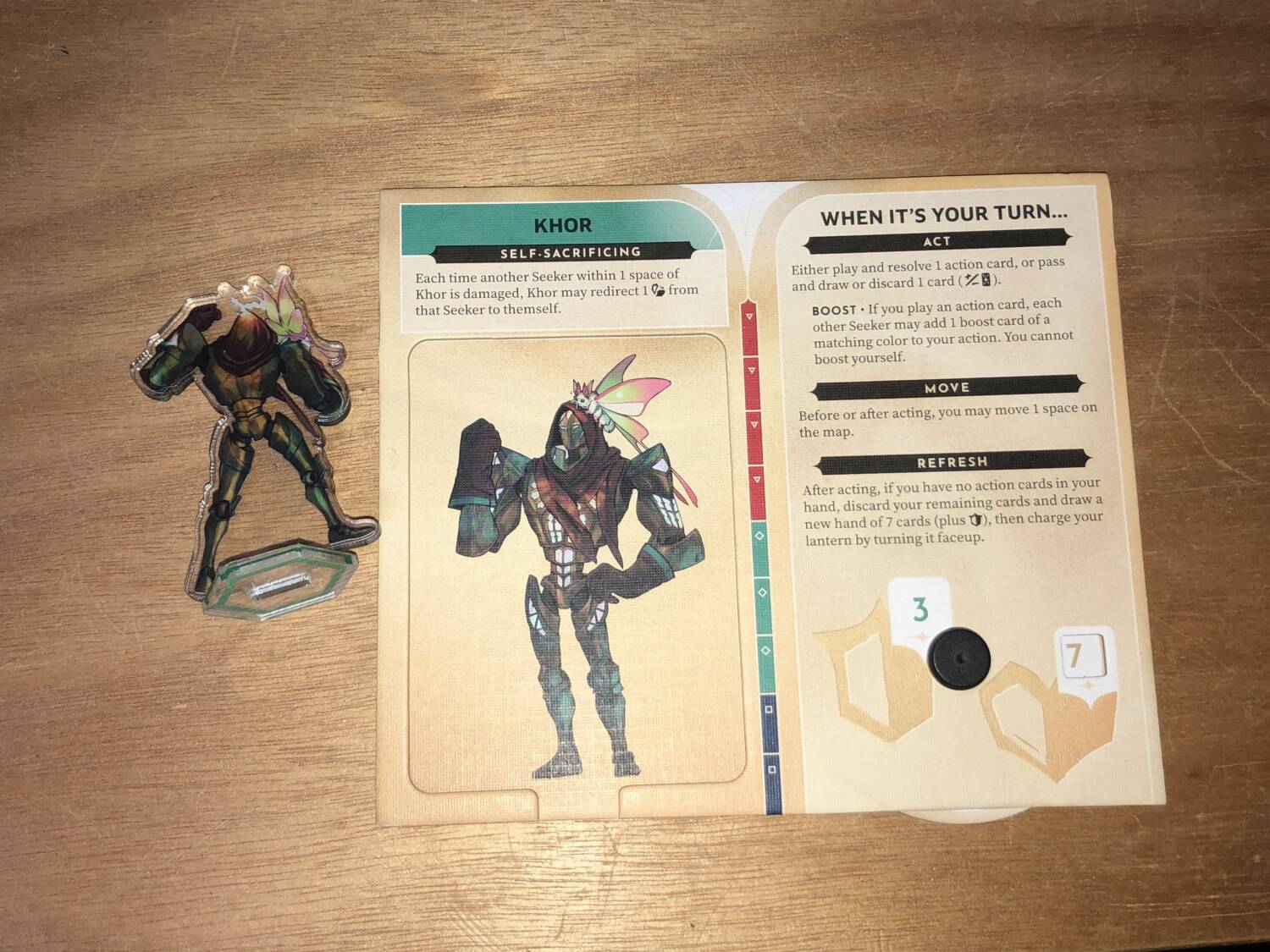
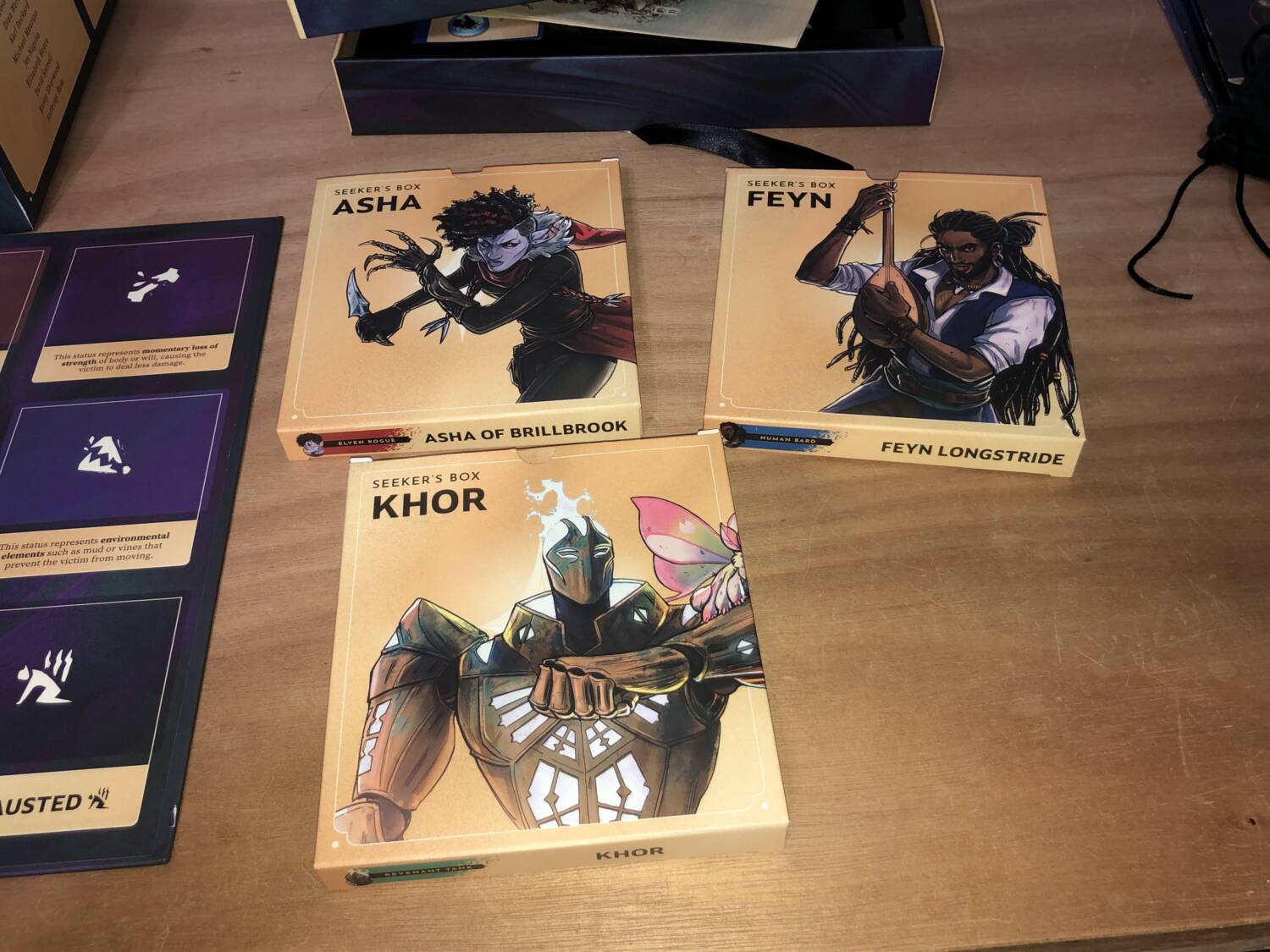
Luck of the Draw (bag)
Now is a good time to mention the interesting way Kinfire Chronicles addresses turn order. Unlike a standard rotating turn order or a simultaneously selected initiative number such as Frosthaven, everything in Kinfire Chronicles is handled by drawing chips out of a bag. Each character has a number of chips in the back, depending on player count; the boss usually starts with thirteen total. At the start of each turn, you’ll draw a chip and whoever’s chip is drawn, that player or monster activates. Certain effects can return or remove chips back into the bag, but the bag determines the flow of combat.
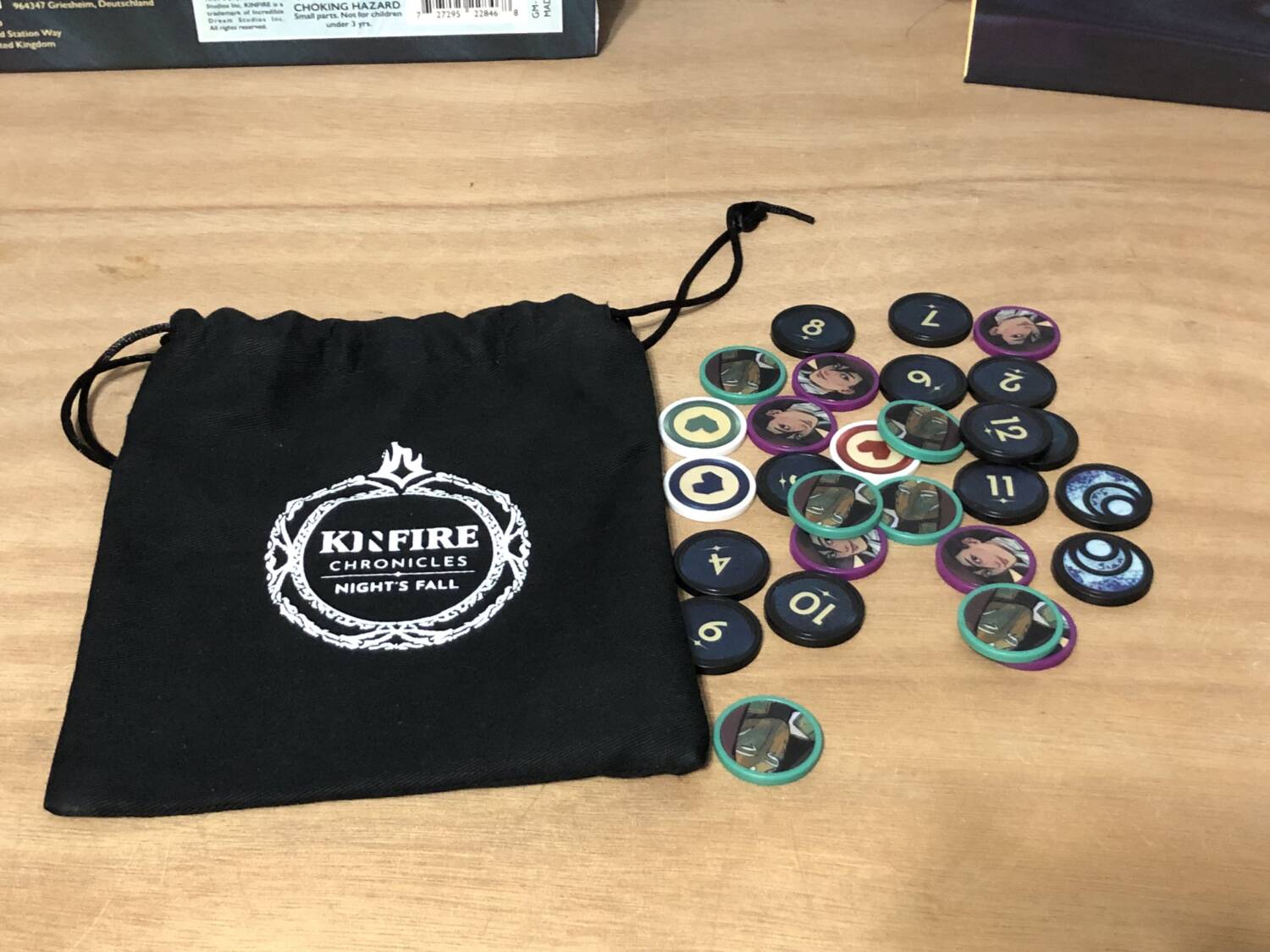
The boss’s chips are numbered; the number pulled determines which boss action it takes. Each boss has a sheet that describes the abilities, as well as a specific card that says which abilities are assigned to which number.

Knowing the boss abilities, but not knowing in what order the chips will be pulled, gives just enough unpredictability to keep you on your toes. Players might get four turns in a row by random draw, allowing them to get a series of good whacks on the baddies. Of course that means that there are now fewer player chips in the bag and the enemies could just as easily go off for multiple turns.
If you’re able to reduce the boss’s health down to zero, huzzah, you are triumphant….maybe. The monster card generally directs you to read another card to advance the story, and it’s no spoiler to say that sometimes bosses have multiple forms. Just when you’ve thought you’ve won, the boss charges right back up to full health and you have to fight a new form. This might involve adding new overlays that change up the boss’s health, abilities, etc.
The specific boss encounter card will also direct you to read a card if any of the Seekers’ health drops to zero. Kinfire Chronicles incorporates what has been described as a “fail forward” approach. The story advances whether you win or lose the battle. Generally you’ll receive better rewards and perhaps some different story beats if you are victorious, but either way you press on. The ‘fail forward’ approach keeps the story moving and prevents you from having to replay scenarios until you get it right, although I suppose you could retry them if you wanted.
While the meat of the game is in the battling, that’s not to say that the story doesn’t matter. The narrative is engaging, and the choices you make during your adventure and exploration phases do make a difference, often giving you side quests, special relics or even future allies. Although there is one primary story being told as you’re led through scenarios, there are a number of winding paths you can take. Although they all end up in the same place, the journey can be different.
Game Pros:
Production:
Kinfire Chronicles impressed me from the start with the production value. For one, the box lid is magnetically clasped, and when removed, actually becomes the game board.
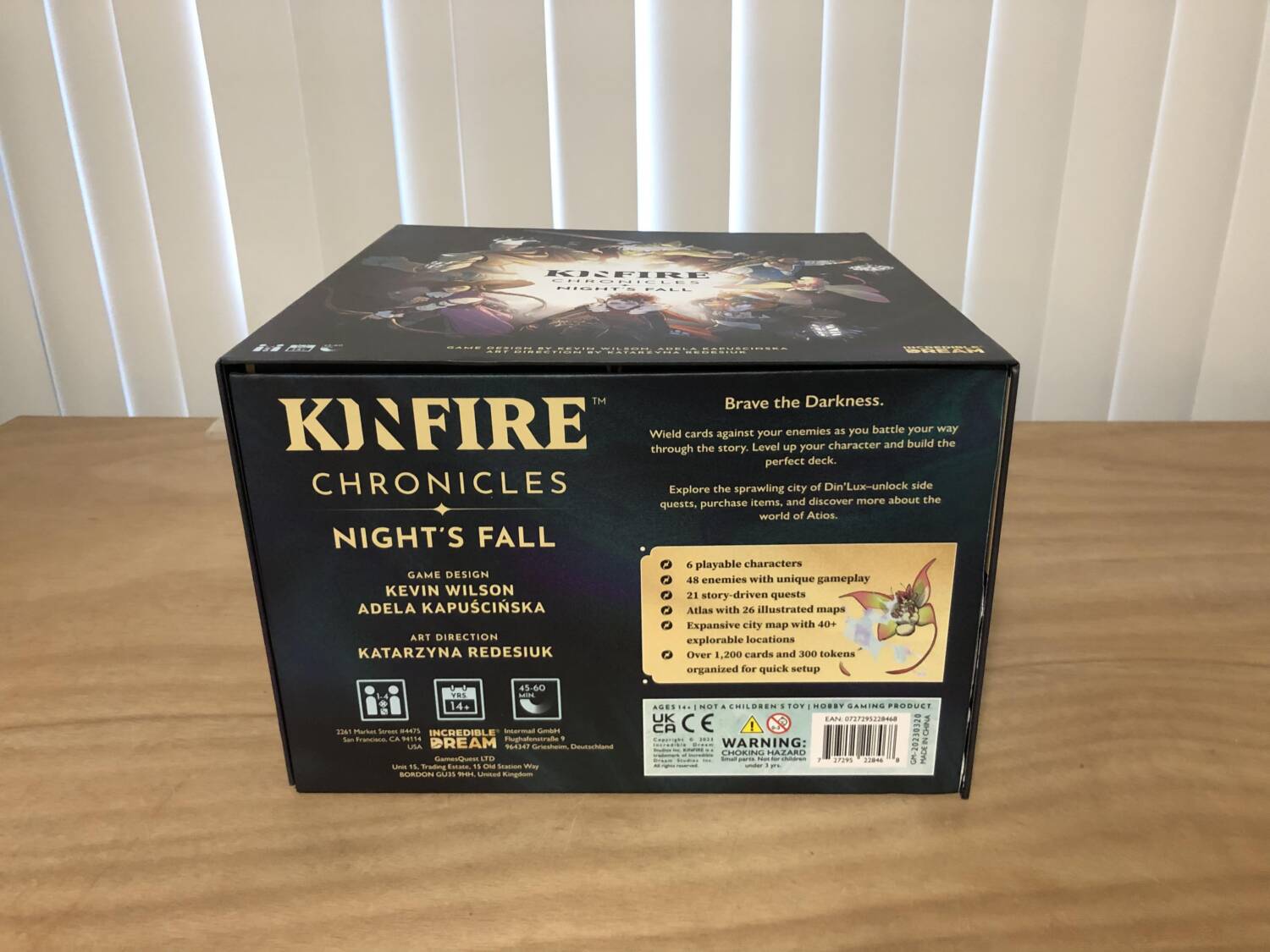

When you first open the box you’re greeted with a Welcome box, complete with a handy ribbon pull tab for easy removal.
 Underneath that is a neatly organized display of player boxes, scenario boxes, and some extra stuff I won’t spoil here.
Underneath that is a neatly organized display of player boxes, scenario boxes, and some extra stuff I won’t spoil here.

Player standees are the painted clear acrylic type, allowing you to appreciate the beautiful art style as opposed to a wooden meeple or gray miniature, although standees for the monsters are your standard cardboard standees.
There is an upgrade pack available that gives you custom playmats, sleeves, metal coins, and acrylics for the monsters, but the production value of the standard retail edition is so impressive that there’s very little need for fancy upgrades.
Accessibility
Upon opening up the welcome box you are provided with an introductory manual that gives you everything you need to get the campaign up and running. Setup is lightning fast. The time between me breaking the shrink-wrap to playing the first scenario was maybe 10 minutes. Kinfire Chronicles does an excellent job of easing you into the game system, introducing one or two game mechanics per scenario until you are playing a robust tactical experience, all while immersing you in the world of its unique fantasy setting. Future scenarios are even easier to set up; just grab your player box and the scenario box, open it up and go.
Scenarios are relatively quick, the rules are straightforward with very little unneeded complexity. The way they are slowly introduced as you proceed chronologically through scenarios is a masterclass in tutorial design. It even bests the exceptional Gloomhaven: Jaws of the Lion’s tutorial, although it’s not quite a one-to-one comparison given the relative complexity between the two.
Kinfire Chronicles is light, but still challenging. For such a large campaign, it feels like a small game in the most complementary ways. Turns are quick, scenarios never drag on, and the fail-forward story progression makes it very easy to keep the campaign moving. You could easily play two or three scenarios in one game night, a rare and impressive feat for a game of this scope. This is very easily the most accessible campaign game that I have ever seen, which is perhaps its greatest strength.
Cons:
Randomness:
If you are looking for deeply strategic battles that allow you to execute your multi-turn master plan to perfection, you won’t find it here. The luck of the draw-bag means that sometimes—through no fault of your own—you get walloped. Theoretically that is offset by the equal chance that you’ll be doing the walloping, but given that the enemies generally have more powerful attacks and greater hit point pools, you may lose a battle simply due to chance. If that amount of chaos turns you off, then Kinfire Chronicles probably isn’t for you.
Story:
While the fictional world of Atios in Kinfire Chronicles is certainly robust and the primary story engaging, there is some bit of world-building that is just lacking. In taking you through the plot as quickly and easily as it does, it loses a bit of the wonder of exploring the history, lore, and world. To be fair, I don’t know how they could have both expanded the world and kept the campaign as stream-lined and quick-moving. While I understand and respect the choice of smoothness over depth, the fantasy reader in me just wanted more.
Final Thoughts:
Kinfire Chronicles is ultimately a triumph for me. I very much enjoyed my playthrough of the campaign. The campaign, while certainly providing the feeling of an epic scale, was surprisingly light and extremely accessible. The gameplay is challenging, but not too complex. The tutorial system and production value are second to none. While this won’t be the next Gloomhaven or Sleeping Gods, it isn’t trying to be. It successfully does what I believe it sets out to do; provide a large-scale campaign at a small-scale entrypoint. I would highly recommend Kinfire Chronicles, particularly for families or groups who prefer lighter games.


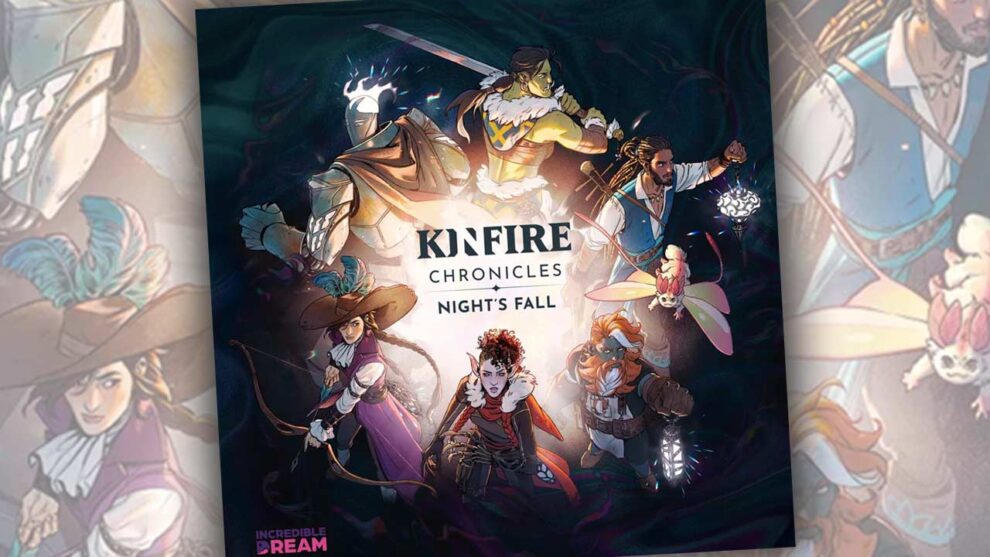



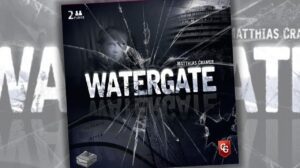




Add Comment